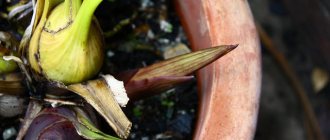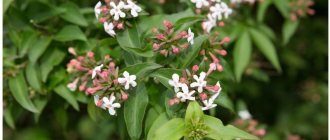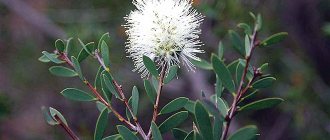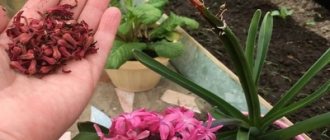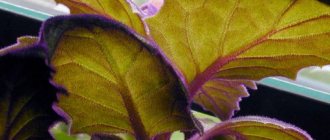Cyclamen is a picturesque flower native to southern countries. It is too cold for it outside in our climate, so the flower is grown in Russia as a houseplant. Cyclamen is quite whimsical and capricious, and its reproduction is especially difficult. In the article we will learn all the ways in which you can propagate a flower yourself at home, find out how to care for the plant after planting and what problems are likely.
A little about the plant
Two types of cyclamen are grown indoors:
- European;
- Persian.
Let's talk about them in a little more detail.
European
The tubers of this variety have a diameter of 10 cm, their shape is spherical, slightly flattened on the sides, and sometimes elongated. The foliage of the plant is dark, round in shape. The upper surface of the leaves has a silvery pattern, and the lower part has a reddish tint.
The second name of the European cyclamen is Purple. It can be grown up to 30 cm in height. It blooms in spring and summer with pink, white, purple flowers, depending on the variety. European cyclamen can be propagated by leaves, although not without difficulty.
Persian
The plant boasts large tubers, reaching a diameter of 15 cm. The foliage is also large, evenly green below, and with a silver pattern on top.
Persian cyclamen blooms in winter, which gives it an advantage over European cyclamen. But this variety cannot be propagated by leaves.
Types of cyclamens
There are countless types of cyclamens. But there are only nine most common types, we will talk about them further. The homeland of this flower is the Mediterranean coast. Due to the rapid spread of the plant, the name of its varieties began to be assigned according to the place of growth, for example: Persian, European, African, etc.
- Persian cyclamen. The most popular type of this plant. It has many varieties. The most popular subspecies are “Barbadosa”, “Gabi” and “Orpheus”. The leaves of the Persian cyclamen are heart-shaped, rich green in color, and have a white marble-like pattern. The petals of the plant come in different colors: from white to purple. There is a hybrid of Persian cyclamen. It has a longer flowering period and comes in eighteen petal colors, unlike the common Persian drake.
- European trash. European cyclamen is also called blushing. Distributed in Italy, Macedonia, Slovenia. The leaves of the flower are basal, with a pointed tip and slightly jagged edges, and have a green-silver color.
- African cyclamen. Algeria and Tunisia are considered to be the birthplace of African cyclamen. There are two types of African cyclamen: tetraploid and diploid. They are distinguished by the smaller caliber of the leaves and the greater fragrant inflorescence of the diploid one.
- Alpine cyclamen. A distinctive feature of this variety of dryer is the special arrangement of the flower petals and their twisted oval shape. The usual arrangement of petals corresponds to 180º, for the alpine violet - 90º.
- Pontic cyclamen. Also known as “Colchisian”, “Abkhazian”, “Caucasian” cyclamen. This type of dryer is used for medicinal purposes and in bouquets. It is listed in the Red Book; unfortunately, there are too few representatives of this species left.
- Greek trash. Grows in damp places with light shade. The leaf color ranges between lime and dark green, and the flower color varies between pale and scarlet pink. In the 80s of the last century, a very rare subspecies of cyclamen with snow-white flowers was found in the Peloponnese, which is now listed in the Red Book.
- Kos cyclamen. As you already understand from the name, this cyclamen was bred on the island of Kos in the Aegean Sea. The base of the petals of this species is very bright, although this drake does not differ in the variety of petal colors from other cyclamens. But colors such as purple, red, white, pink are observed, they are more saturated and bright than other cyclamens.
- Cyprian Drunk. Loves bushy terrain with rocky soil and trees. The height of the plant is 8-16 cm. The leaves have a heart-shaped appearance, the color of the inflorescences is dominated by purple and pink shades.
- Ivy leaf cyclamen. Ivy-leaved cyclamen, or Neapolitan, is the most common plant in Europe. The original name of the flower, Cyclamen hederifolium, was given in 1789. The second, familiar to us - Neapolitan cyclamen - appeared in 1813. This type of dryer is the most frost-resistant, so it gets along well in the northernmost regions of Europe.
Tuber division
Only the tuber of an adult plant can be divided, but only after flowering. Usually the procedure is carried out during the next flower transplant.
Procedure
- Cyclamen is carefully dug out of the ground and dried.
- The tuber of the plant is divided into several parts with a sharp, clean knife. It is important to make sure that each part gets its own roots and bud.
- The cut area is sprinkled with charcoal or ash to protect against infection.
- The separated parts are placed in separate containers and watered.
Important: when caring for rooted cuttings, you should not allow the soil to overflow, as parts of the tuber can easily rot because of this.
What kind of plant is this?
Cyclamen is a perennial herbaceous plant from the Myrsinaceae family. It stands out for its bright and abundant flowering. Its inflorescences resemble a butterfly. They are located on long legs and rise above the foliage, forming a lush flower cap. The flowers come in a variety of colors, from pink to purple. The leaves, which form a dense basal rosette, look like small hearts, painted green with a silver pattern. They are located on petioles of a light green hue.
In nature, this plant lives in difficult climatic conditions, with low temperatures and unstable humidity.
Cyclamen can live up to 25 years, this happens due to the fact that the periods of rest and wakefulness change. In apartment conditions, these flowers live an order of magnitude shorter, since dry and warm air quickly depletes their tubers.
Characteristics
Before delving into the intricacies of how to care for a cyclamen flower, it’s worth learning more about it. A representative of the Myrsinaceae family, it is a perennial herbaceous tuberous plant. Under natural conditions, it grows in the warm, humid climates of the Middle East and Southern Europe. Even on the Black Sea coast you can find blooming cyclamen thickets. The culture includes more than 60 species, and 20 of them have taken root in our country. True, they do not grow in open ground, but in apartment conditions. The Russian winter is too harsh for a heat-loving plant.
The root system of cyclamen is a large tuber, similar to a flattened brown ball. In it, the flower stores moisture, without which it cannot survive, especially in the wild. The diameter of the tuber is on average about 5 cm, but there are real giants. Their simply huge tubers reach 15 cm in diameter.
Numerous thin auxiliary roots grow from the lower part of the tuber. And in the upper part there are growth points. From them, at the beginning of the growing season, leaves appear on long petioles. They have a very beautiful heart-shaped shape with a jagged edge. The main color is green, but the entire surface of the leaf blades is painted with silver strokes.
With the arrival of autumn, thin flower stalks begin to rise one by one above the lush foliage rosette. They bend gracefully under the weight of large flowers. Their elongated wavy petals are bent in the opposite direction, resembling the wings of a butterfly. Each lives for almost 2 weeks, and just one bush can produce up to a hundred buds. The natural color of cyclamen is pink-purple. But breeders have developed many varieties with a wider range of colors.
After flowering ends, the above-ground part of the bush dies off, and the cyclamen goes into hibernation. Only after resting will it be able to bloom again next season.
Daughter tubers (babies)
Next to the mother tuber, the European cyclamen eventually forms so-called children - daughter nodules, which can be used as full-fledged planting material.
Procedure
- After flowering, adult cyclamen is removed from the ground.
- Daughter shoots are separated from the mother tuber.
- After separation, the children are dried, disinfected if necessary, then they should be seated in separate pots.
- The entire tuber must be underground
- Immediately after planting, the tubers are well watered to facilitate the rooting process. You should know that the roots will grow over the entire surface of the child, and not just from below.
Rosettes
One of the most effective and most commonly used methods of propagating cyclamen. Tuberous shoots are called rosettes or horns - excellent planting material. You should take shoots only from adult cyclamens that have already bloomed several times: in this case, the likelihood of survival will be greatest.
Procedure
- The horn is broken off from the mother tuber and planted in a moistened substrate. All the horns cannot be torn off at once: from such barbarity the mother plant may die. Tear off only one shoot from the tuber, no more.
- The top of the container is covered with film to create the effect of a greenhouse inside. The container should be kept at room temperature.
- After 15 days, with regular ventilation and watering, the horn sprouts roots.
- After the roots appear, the shelter is removed and care is carried out as for a full-fledged plant.
Attention: this method is suitable for European cyclamens. In Persian species, the rosettes practically do not take root (as well as the leaves).
Methods
To ensure rapid and normal growth of seedlings, it is necessary to provide the cyclamen with appropriate lighting.
Direct exposure to sunlight is prohibited; burns of foliage and flower petals may occur. Experts recommend installing the container with the plant on the east or west side of the room. As a result of ventilation, protect from drafts.
Temperature
Cyclamen is of southern origin, but feels comfortable in cool climates. The normal value is considered to be 18°C; in winter, the temperature should not exceed 12°C. It is forbidden to keep the plant under the influence of heating radiators, this can lead to yellowing and falling leaves.
For seedlings, it is necessary to use soil that must contain the following elements:
- rotted fertilizer;
- sifted sand;
- peat;
- parts of turf;
- earth mixed with rotted leaves.
Humidity
Cyclamen requires regular watering, but it is not recommended to flood the roots of the plant. this phenomenon can lead to rotting of the tubers.
It is able to tolerate short dry periods. For irrigation, use water with a temperature of at least 16°C. Seedlings are planted in containers equipped with drainage, thereby preventing rotting.
Before flowering, watering is carried out at the root, then it is recommended to pour water into the pan to feed the roots. During the dormant period of cyclamen, it is necessary to reduce soil moisture by almost half. When dust appears on the foliage, remove it with a damp sponge.
Attention! It is recommended to use water after standing for a short time, without chlorine, at room temperature.
The right time
Depending on the variety of cyclamen, it has a certain breeding period. Experts recommend sowing in the second half of March. This ensures intense flowering in the fall.
Once your seedling has grown into an adult plant, it can be propagated again if desired. To do this, it is not necessary to resort to the seed method.
You can get a new alpine violet bulb using:
- dividing the bush (involves cutting the tuber);
- daughter rosettes (the method is relevant when the tuber independently develops shoots).
Seed propagation of cyclamens is the most popular among other types of propagation. If you follow all the agrotechnical subtleties, you can grow a beautiful and unpretentious flower at home.
How to divide a flower? If seed propagation of cyclamens is very complex and requires a lot of time and effort, then propagation by leaf cuttings, rosettes and tuber division is much simpler and is guaranteed to transmit the parameters of the mother plant to the next generation.
Rosettes
Cyclamen rosettes are shoots on a root bulb, developing from buds with which the nodule is literally strewn. Of course, not all of them awaken and sprout; as a rule, there are only a few of them. The shoots of old cyclamen grow quite long; professional flower growers even came up with a special name for them - horns.
For the purpose of breeding, one of the developed shoots is separated from the tuber, twisting it as if literally with meat, but with extreme caution. After separation, the shoot is transplanted into moist soil, which is usually taken for growing cyclamen, and a greenhouse is organized. To do this, use a glass jar or plastic bottle with a cut bottom, or a plastic bag.
The greenhouse must be made of completely transparent material. The plant is not covered tightly, the usual temperature regime is maintained at 20-25 degrees.
Reference. After two to three weeks, roots should form. After this, the greenhouse is cleaned and the cyclamen is cared for as usual. It begins to grow leaf mass and creates a nodule.
Children
How to share with children? Usually, when cyclamens are transplanted into new soil, in the middle or at the end of summer, new planting material is removed, taking from the tuber additional baby nodules that form on the surface of the mother tuber.
- The healthiest baby mini-tuber is selected; its signs are the absence of wrinkles on the surface, and there should be a bud at the top of the nodule.
- A newborn bulb is carefully separated from a large tuber and rooted in a small glass in a regular substrate, placing an improvised greenhouse for a week or two.
- After the first leaves sprout, the greenhouse is removed and cared for as if it were an ordinary plant.
- After several leaves appear, the seedling is moved to its permanent place of residence - in a pot.
- After a month, they are fertilized with the usual preparation for cyclamens, only the solution is made weaker, feeding in the future according to the usual rules.
From leaves
Leaf cuttings of cyclamen have the peculiarity that rooting does not occur in water, and rooting in the substrate is not always successful. This method is used only for the European species. They choose leaves with small roots, so for the Persian species, which does not have them, the method will be ineffective (you can read more about the Persian species and how to care for it in this material, and you can learn about how to distinguish this species from the European one here).
The leaf is not cut off, but must be broken off with a small fragment of the tuber. It turns out that at the end of the petiole there are something like thread-like shoots, these are mini-roots, they will allow the leaf to take root and develop as an independent plant. They are called "fingers". Such a fragment is planted in the soil and covered with a greenhouse until it takes root, then it is removed and cared for as usual. More details about the propagation of cyclamens by leaves can be found here.
Seeds
The method is mainly used for the Persian variety:
Before sowing, the seed material is soaked in a biostimulating solution for eight hours, and then sown in peat-sand soil, previously disinfected by calcination.- Immerse the seed to a depth of about a centimeter, watering the holes a little before sowing. The main condition for germination is darkness, so the container is covered with black film. Do regular ventilation and moisturizing, preventing the soil from drying out.
- After 30-45 days, the seedlings hatch, the film is removed, and the container is opened for full lighting. The optimal temperature for the development of seeds and seedlings is 18 degrees.
- After the development of 2-3 leaves, a pick is made, completely covering the small nodules with a soil mixture.
- After six months, they are planted in pots, leaving the tuber a third above the surface of the ground.
Seedlings bloom after a year and a half.
More information about growing cyclamens from seeds can be found in this material.
The cyclamen tuber is its most important and most vulnerable part. Division by cutting the tuber is an extreme procedure, which will most likely lead to rotting of the division or death of the mother plant, and possibly both.
If we are talking about tuberous propagation, then it is still preferable to use division by children. However, let's consider the propagation of cyclamen by root division. Here you need to take into account that this option is only suitable for very large, overgrown cyclamens.
Important! It is necessary to choose the right time for division. The tuber can be subjected to this process only during the dormant period.
Seeds
This procedure is lengthy, but, nevertheless, due to the complexity of vegetative propagation, gardeners often have to resort to it. Note that Persian cyclamen reproduces at home mainly in this way.
It is recommended to plant seeds at the end of March. Thus, during the period of active growth, the seedlings will not require additional lighting: in the summer there is already a lot of sun.
Seed selection
To increase the likelihood of successful seed germination, it is important to choose them wisely from the beginning:
- when purchasing, pay attention to the type of cyclamen, its variety;
- check whether the seeds are intact and not covered with mold or fungus;
- check the expiration date of the planting material.
If possible, you can collect seeds from an existing adult cyclamen with your own hands. Typically, ripe seeds acquire an orange tint.
But if you are going to use seeds collected yourself, you should know that only those that have previously been pollinated will sprout. The procedure is simple and can be done either by hand or with a soft brush (watercolor is fine).
Do not wait until the box is overripe and the seeds fall to the ground. Collect them in advance: you just need to pick the box and put it on a plate to fully ripen and open. The collected planting material in the form of small brown seeds in a paper bag is stored in the refrigerator until autumn.
Procedure
- Before planting, the seeds are soaked in water for a day, laid out on abundantly moistened cotton pads. Add water when the cotton wool starts to dry out.
- This is followed by treatment with a root stimulant: the seeds are soaked for 12 hours in a solution diluted according to the instructions.
- This is followed by sowing into previously prepared and moistened soil. For planting you need a suitable container: it should be wide and shallow. The composition of the soil for sowing seeds should be as follows: peat, perlite/vermiculite, leaf soil.
- The seeds are not buried, but simply laid out carefully and as evenly as possible on the surface of the substrate. Try to maintain a distance of at least 4 cm between seeds.
- Sprinkle the seeds on top with a 1 cm layer of soil.
- The container is covered with film and glass on top to create a greenhouse effect inside. Seeds must germinate in darkness and high humidity: the protective film must be black and opaque.
- The optimum temperature is around +18 degrees. When germinating seeds in lower temperatures, the plant will flower later. And if the temperature is higher, seedlings will appear later.
- When seedlings emerge, the shelter should be removed to allow the plants access to air and sun. Do not expose germinating seeds to drafts or sudden changes in temperature. Once every two days, remove the protection and ventilate the greenhouse.
- One to three months after planting, young cyclamens begin to develop their first leaves, and their own tubers begin to form underground. It's time to pick.
- The strongest and most viable seedlings are selected: they are planted in separate pots to be grown as independent plants. Picking is done after the seedlings have acquired two or three true leaves. Transplanted small nodules of young cyclamens should be completely covered with soil.
- After picking, the seedlings are grown. And after six months they can be planted in permanent pots.
- When the plants reach six months of age, their first feeding is done. For this purpose, a complex mineral composition is usually used, diluted in a concentration reduced by half.
- Flowering of cyclamen obtained from seeds will occur only after a year and a half. Therefore, you will have to be patient.
Adviсe
If you use ingredients taken from the garden, be sure to disinfect them before use. This is quite simple to do: you just need to pour boiling water over the soil or bake it on a baking sheet in the oven.
The planting container must have good drainage. Therefore, before putting soil into the container, first lay expanded clay drainage or a layer of small foam balls on the bottom. The height of the drainage should be 2-2.5 cm and its purpose is to protect the roots of young seedlings from waterlogging and rotting. The substrate is poured on top in a layer of 6-7 cm. Spill the soil with water so that excess liquid drains abundantly from the drainage holes
Young seedlings will not grow quickly at first. But there is no need to despair: it is during this period that they actively form a powerful root system and grow tubers.
Planting and caring for cyclamen
- Flowering: early spring, autumn, sometimes all year round.
- Lighting: bright diffused light, light partial shade.
- Temperature: 6-12 ˚C.
- Watering: during the period of active growth, regular, moderate, using bottom watering.
- Humidity: higher than usual.
- Feeding: once every two weeks with a solution of complex mineral fertilizer for flowering indoor plants in a weak concentration.
- Dormant period: within 2-2.5 months after flowering.
- Replanting: once every two years at the end of the dormant period.
- Reproduction: by seeds and by dividing the tuber if it has more than one growing point.
- Pests: spider mites, aphids, thrips, cyclamen mites.
- Diseases: gray rot, rhizoctonia, late blight, fusarium wilt.
Read more about growing cyclamen below.
plant (lat. Cyclamen) belongs to the genus of herbaceous perennials of the Myrsinaceae family, although some scientists classify it as a member of the Primrose family. The plant's name comes from a Latin root meaning "round", like the shape of cyclamen tubers. The genus has about 20 species. In nature, the cyclamen flower is widespread in the Mediterranean, Iran and North-East Africa, but most of all in Turkey. Some types of cyclamen are successfully grown as indoor plants. Diluted cyclamen juice is used to treat sinusitis, but care should be taken as it can burn the mucous membrane.
Is it possible to propagate by leaf?
Let's say right away that this option for vegetative propagation of cyclamen is quite possible, but it requires some effort: it is unlikely that a beginner will be able to do it. The main difficulty is that cyclamen leaves do not take root well. It often happens that after standing in water or soil for some time, the lower part of the leaf simply rots, and the upper part dries out.
Therefore, this method is used only by very experienced flower growers or real “lucky” people who succeed in everything they undertake. Below are some useful tips that will help you root the leaf more efficiently.
- Try to find a leaf on a plant that has small roots (fingers). Such a leaf is much more likely to take root.
- Only European cyclamen can be propagated in this way. Persian does not have leaves with spines, so this method is excluded for it.
Why doesn't cyclamen bloom?
The main reason is that the temperature in the room is too high, the plant is simply too hot. Try to change this situation.
Secondary reasons include insufficient watering of the plant and low air humidity.
How to grow cyclamen? It is necessary not only to grow it, but also to protect it from diseases. It is important to know cyclamen diseases, which can lead to the death of this delicate flower. Read more about what diseases and pests of cyclamen can befall cyclamen owners HERE.
We hope this article gave you maximum answers to the question of how to grow cyclamen. We will be glad if you share your secrets of caring for this beautiful flower in the comments.
How to care
Let's find out what care and conditions need to be provided to young cyclamens for their successful development, growth and further lush flowering.
Priming
For young cyclamen, the following soil composition is considered optimal:
- humus;
- sand;
- peat;
- turf substrate;
- leaf soil.
All components should be taken approximately equally.
Lighting
Provide flowers with abundant but diffused light. Direct rays should not be allowed to hit the cyclamen petals, as this often leads to their burns and wilting.
It is best to place cyclamen on windows on the east or west side of the house. If there are no windows other than southern ones, shade the plant from aggressive midday rays. Do not forget about ventilating the room: it is important that during this procedure the cyclamen is not exposed to a draft.
Temperature
Cyclamen, despite their southern origin, feel better at relatively cool temperatures. It is ideal to grow them at +18 degrees. In winter, we recommend keeping the plant at a lower temperature: +10-12 degrees. At higher temperatures, cyclamen often loses its leaves or turns very yellow.
You should not place the plant near working heating radiators: such a hot neighborhood can lead to the death of cyclamen.
Watering
Young cyclamens need moisturizing treatments regularly. However, excessive watering is unacceptable: this can lead to rotting of the nodule root system of plants. Cyclamen will survive a slight drought much easier than a flood.
Water with water at room temperature, but not cold (not lower than +16 degrees). Make sure that the pot is equipped with drainage holes at the bottom: this will prevent stagnation of water. Before the cyclamen flowers appear, it is permissible to water it in the pot. After the buds appear, it is recommended to water using a tray.
During the dormant period in winter, watering is reduced, but not stopped at all. Drying out of the substrate is unacceptable. You should use only clean water, soft, settled, without chlorine.
The plant does not need spraying. If dust has accumulated on the leaves, simply wipe it off gently with a slightly damp sponge. Or simply shake off each leaf with a soft brush.
Top dressing
In order for the plant to feel good and bloom successfully, it is necessary to feed it. The frequency of fertilization is twice a month during the growing season. We recommend using ready-made mineral fertilizers.
In winter, fertilizers are not applied: cyclamen needs additional nutrition only during the growing season. In the spring, add nitrogen to the soil so that cyclamen quickly forms lush greenery. And before flowering, it doesn’t hurt to feed the plant with a special composition to stimulate budding. The drug Kemira Lux is perfect for this purpose.
Fertilize no more than twice a month, since excess fertilizer is no less harmful to cyclamen than too little. If you overfeed a plant, its flower stalks are shortened, its buds become smaller, and its petals become dull. If overfeeding is severe, even an emergency transplant may be required.
Transfer
If the cyclamen has outgrown the old pot, you need to find a new one for it. Keep in mind that the new container should not be too large: a maximum of 2-3 cm larger in diameter than the previous one. If you plant the plant in a pot that is too large, the cyclamen will rapidly develop roots and foliage, but will have to wait a long time for flowering.
When transplanting, European and Persian cyclamen bulbs are buried in different ways:
- European entirely;
- two-thirds Persian.
This is due to the fact that in the European cyclamen the roots grow over the entire surface of the onion, while in the Persian one only in its lower part.
Home care
The rules for caring for the plant are the same as usual.
- Watering. Watering in the future should be done extremely carefully so that the division does not rot. It is recommended to water along the edge of the pot. Alternate top and bottom watering. Watering is done from below, pouring water into the pan after the soil has dried.
Lighting. Cyclamen needs full lighting with diffused sunlight. It does not tolerate direct lighting.- Temperature. A fan of cool weather, he cannot stand being near a radiator or stove. Temperatures up to 20 degrees are suitable, but 14-17 degrees will be optimal.
- Air humidity. Excessive dryness will be detrimental, and direct spraying with water is not recommended. It is better to place cups of water or a vaporizer next to the pot.
- Recharge. To carry out the first bait, wait until the sprouts appear. Basically, they try to start feeding after six months. At first, do not use nitrogen supplements. Liquid floral compositions are diluted in half a cap per liter volume of water.
Note! In this case, do not allow the solution to get on the leaves and stems.Excess mineral fertilizers are harmful for cyclamen; they should be used very sparingly. First, the soil is watered, waiting until the water is completely absorbed, and only then replenishment is applied.
Possible problems
Let's find out what problems can be encountered during the reproduction and cultivation of cyclamen, and how to cope with these problems.
Yellowing of foliage
This usually happens if cyclamen is kept at too high a temperature or in dry air conditions. Often the reasons are combined. To restore the plant to its former beauty, you need to remove it away from radiators, place it in a room with an average temperature (not higher than +18 degrees), and spray the air around it more often.
If the flowers are quite healthy, but the foliage has turned yellow, most likely the problem is that the temperature is too high. Lower it to +18 degrees, and everything will return to normal. Sometimes the foliage turns yellow due to dry soil. This happens, as is clear, due to irregular watering.
And if the leaves begin to turn yellow and fall off after flowering, there is nothing to worry about. This is a natural process associated with the transition of cyclamen into a dormant period. However, if the process becomes too strong, place the plant in a cooler room.
Root rotting
This dangerous problem occurs when the plant is overwatered. In addition, when watering, you should not pour water on the rosette: this can cause the core of the flower to rot and become moldy. To avoid problems, water cyclamen sparingly. To keep the soil moist longer, place the pot on a tray with wet expanded clay.
Leaf deformation
Typically, leaves lose shape and curl when attacked by pests. The cyclamen mite most often affects the flower: the miniature pest is difficult to notice with the naked eye. The mite leads to curvature of flower stalks, deformation of leaves, and loss of decorativeness by buds. If damage has already occurred, all diseased leaves should be removed immediately and then treated with cyclamen with an insecticide.
Gray rot
The disease occurs due to keeping the flower in conditions of high humidity. Especially often if high humidity is combined with low air temperature. To prevent the appearance of dangerous fungus, it is recommended to ventilate the room more often and keep cyclamen at the optimal temperature (+18 degrees).
We learned how cyclamen reproduces at home. Not the simplest procedure, however, several options are possible. If the steps are carried out correctly, everything will work out, and soon the young cyclamen will delight you with its first flowering.
When to replant cyclamen
The plant can be replanted in the period after the flowers fall and before the next buds begin to form. An annual transplant is needed to renew the flower and stimulate the growing season.
The vegetative year of a flower should be divided into a period of dormancy and flowering. During hibernation, fertilizers are not applied to crops, watering is minimal, and the air temperature in the room is increased. This is a good time to replant the plant, as it is less susceptible to stress.
Note! Over time, the soil becomes depleted and the crop does not receive enough nutrients. By external manifestations you can understand when you can replant cyclamen
If, under the right conditions, the bush does not bloom for a long time and begins to dry out and the leaves turn yellow, you need to check it for pests. The above-ground part is carefully inspected. If the leaves are clean, you need to check the condition of the roots. The tuber may be affected by rot or insects. In this case, they are treated with an insecticide, the damaged roots are removed, and the tuber is transplanted into a new pot. In this case, flower growers recommend completely replacing the soil.
An adult plant may not fit in an old container. You should pull out the root and see how much space it takes up in the pot. If there is no more room left for the development of the tuber, transplantation into a new, more spacious pot is required.
Is it possible to replant a flowering plant?
It is not recommended to replant any crop during the flowering period. The plant devotes a lot of energy to the formation of buds, the opening of flowers, and the formation of seeds. Transplanting a blooming cyclamen will cause the buds to dry out, the flowers to fall off, and the adaptation process will be delayed. The next flowering will have to wait a long time.
For your information! Often the bush dies, since replanting during the growing season is stressful.
There are cases when it is necessary to replant cyclamen during the flowering period. These bushes are forced out for sale in a blooming state. When purchased, the bush inevitably dies after the petals fall. But he can be saved in time. In such cases, an emergency transplant of flowering cyclamen is done.
Flowering purple variety
First of all, all the buds and flowers are cut off and the bush is transplanted into new soil. The substrate should not be fertilized. It is best to plant the flower in depleted soil; you can add more sand. The culture is put into a dormant state, transferred to a cold place, watered little and not fed.
How to transplant cyclamen at home is described step by step in the next section.
